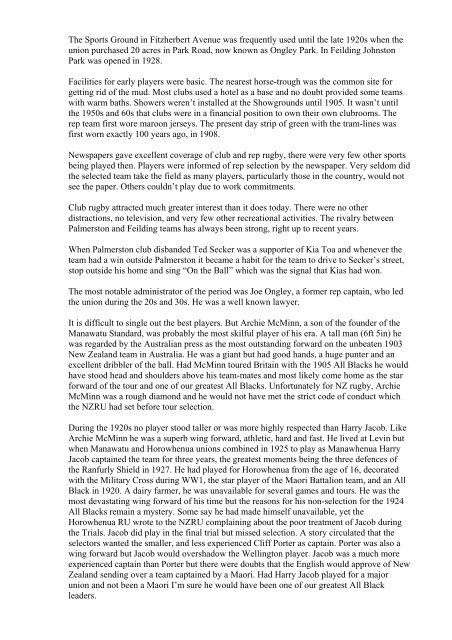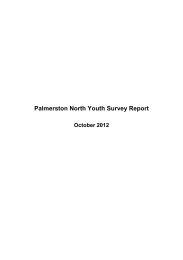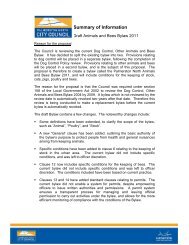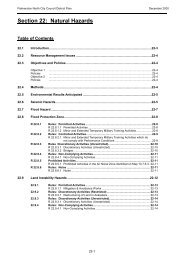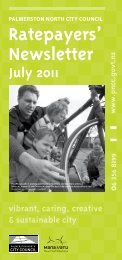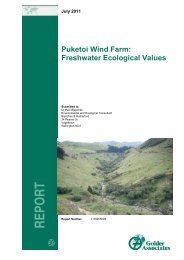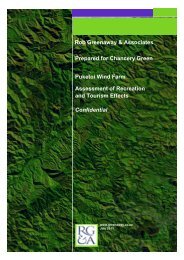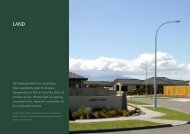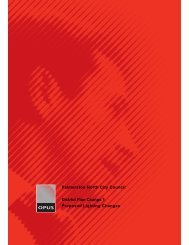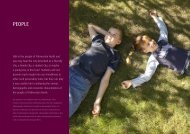Manawatu Journal of History - Digital Library
Manawatu Journal of History - Digital Library
Manawatu Journal of History - Digital Library
Create successful ePaper yourself
Turn your PDF publications into a flip-book with our unique Google optimized e-Paper software.
The Sports Ground in Fitzherbert Avenue was frequently used until the late 1920s when theunion purchased 20 acres in Park Road, now known as Ongley Park. In Feilding JohnstonPark was opened in 1928.Facilities for early players were basic. The nearest horse-trough was the common site forgetting rid <strong>of</strong> the mud. Most clubs used a hotel as a base and no doubt provided some teamswith warm baths. Showers weren’t installed at the Showgrounds until 1905. It wasn’t untilthe 1950s and 60s that clubs were in a financial position to own their own clubrooms. Therep team first wore maroon jerseys. The present day strip <strong>of</strong> green with the tram-lines wasfirst worn exactly 100 years ago, in 1908.Newspapers gave excellent coverage <strong>of</strong> club and rep rugby, there were very few other sportsbeing played then. Players were informed <strong>of</strong> rep selection by the newspaper. Very seldom didthe selected team take the field as many players, particularly those in the country, would notsee the paper. Others couldn’t play due to work commitments.Club rugby attracted much greater interest than it does today. There were no otherdistractions, no television, and very few other recreational activities. The rivalry betweenPalmerston and Feilding teams has always been strong, right up to recent years.When Palmerston club disbanded Ted Secker was a supporter <strong>of</strong> Kia Toa and whenever theteam had a win outside Palmerston it became a habit for the team to drive to Secker’s street,stop outside his home and sing “On the Ball” which was the signal that Kias had won.The most notable administrator <strong>of</strong> the period was Joe Ongley, a former rep captain, who ledthe union during the 20s and 30s. He was a well known lawyer.It is difficult to single out the best players. But Archie McMinn, a son <strong>of</strong> the founder <strong>of</strong> the<strong>Manawatu</strong> Standard, was probably the most skilful player <strong>of</strong> his era. A tall man (6ft 5in) hewas regarded by the Australian press as the most outstanding forward on the unbeaten 1903New Zealand team in Australia. He was a giant but had good hands, a huge punter and anexcellent dribbler <strong>of</strong> the ball. Had McMinn toured Britain with the 1905 All Blacks he wouldhave stood head and shoulders above his team-mates and most likely come home as the starforward <strong>of</strong> the tour and one <strong>of</strong> our greatest All Blacks. Unfortunately for NZ rugby, ArchieMcMinn was a rough diamond and he would not have met the strict code <strong>of</strong> conduct whichthe NZRU had set before tour selection.During the 1920s no player stood taller or was more highly respected than Harry Jacob. LikeArchie McMinn he was a superb wing forward, athletic, hard and fast. He lived at Levin butwhen <strong>Manawatu</strong> and Horowhenua unions combined in 1925 to play as Manawhenua HarryJacob captained the team for three years, the greatest moments being the three defences <strong>of</strong>the Ranfurly Shield in 1927. He had played for Horowhenua from the age <strong>of</strong> 16, decoratedwith the Military Cross during WW1, the star player <strong>of</strong> the Maori Battalion team, and an AllBlack in 1920. A dairy farmer, he was unavailable for several games and tours. He was themost devastating wing forward <strong>of</strong> his time but the reasons for his non-selection for the 1924All Blacks remain a mystery. Some say he had made himself unavailable, yet theHorowhenua RU wrote to the NZRU complaining about the poor treatment <strong>of</strong> Jacob duringthe Trials. Jacob did play in the final trial but missed selection. A story circulated that theselectors wanted the smaller, and less experienced Cliff Porter as captain. Porter was also awing forward but Jacob would overshadow the Wellington player. Jacob was a much moreexperienced captain than Porter but there were doubts that the English would approve <strong>of</strong> NewZealand sending over a team captained by a Maori. Had Harry Jacob played for a majorunion and not been a Maori I’m sure he would have been one <strong>of</strong> our greatest All Blackleaders.


